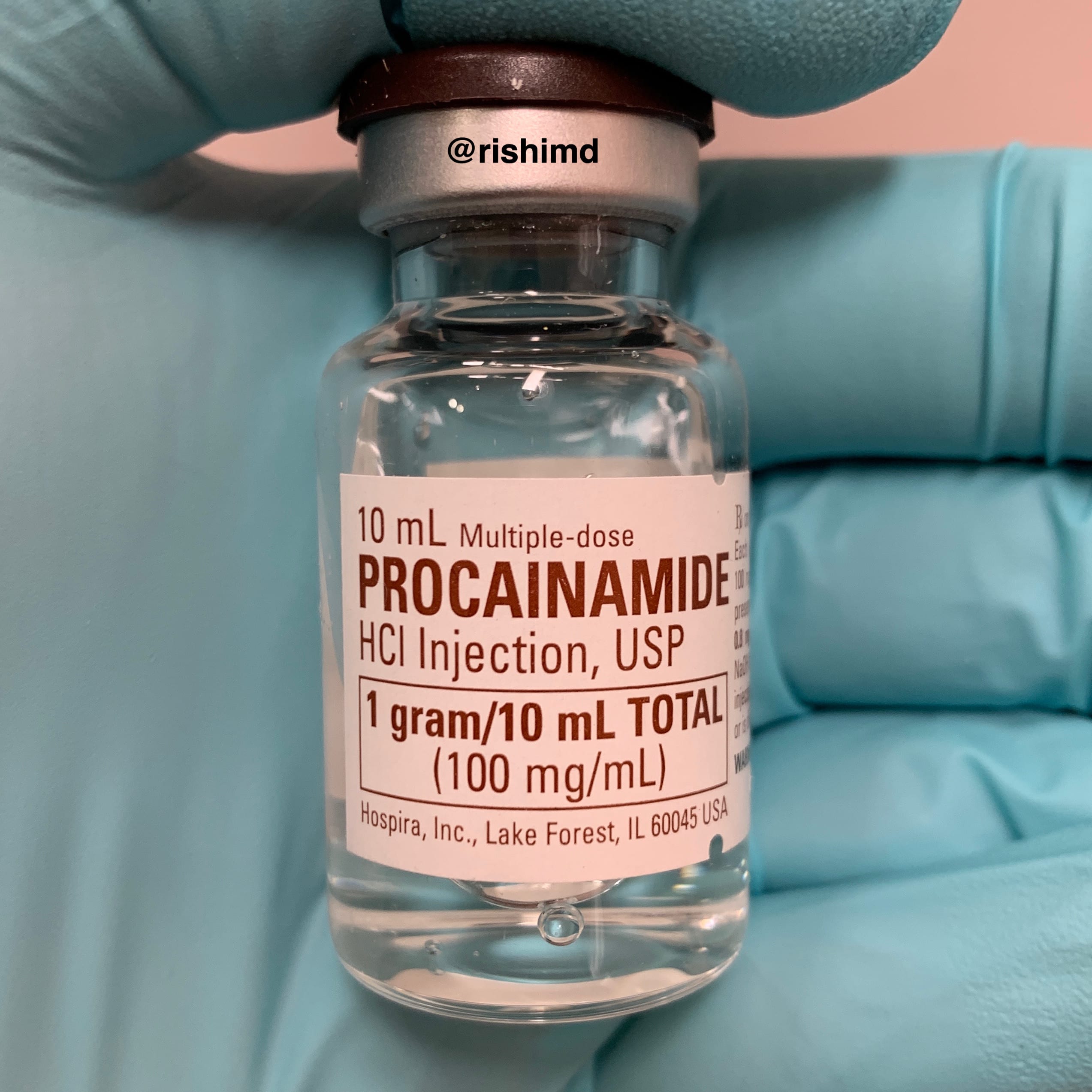Procainamide is a type IA antiarrhythmic which prolongs repolarization via sodium channel blockade. This is achieved by slowing conduction through the ventricular His-Purkinje system thereby widening the QRS complex (and ultimately the QT interval).

As a cardiac anesthesiologist, I most often use procainamide when coming off cardiopulmonary bypass if patients are in a stable atrial fibrillation/flutter (often times I can see the right atrium fibrillating in the operative field) since procainamide slows the atrial rate and has a direct vagolytic effect on the AV node. The net effect is that more atrial impulses are actually conducted through the AV node resulting in normal A-V firing.
As far as “board questions”, procainamide is associated with bone marrow toxicity and drug-induced lupus (as are medications like isoniazid and hydralazine). Furthermore, in patients with atrioventricular accessory pathways as seen in Wolff-Parkinson-White (WPW) syndrome, atrial arrhythmias should be treated with procainamide or cardioversion rather than traditional rate control meds like beta-blockers or calcium channel blockers as these may promote conduction through the accessory pathway.
Drop me a comment with questions! 🙂






You are presenting the topic in such a logic way, and in a systematic style that organize our ideas.
Thank you sooo much
Your topics are very helpful
Appreciate the kind words!
Great post! I did not know about the drug induced lupus part. Just mind blown right now
Thanks Sam! Haha, yeah it’s one of those tidbits that pops up on board exams all the time!